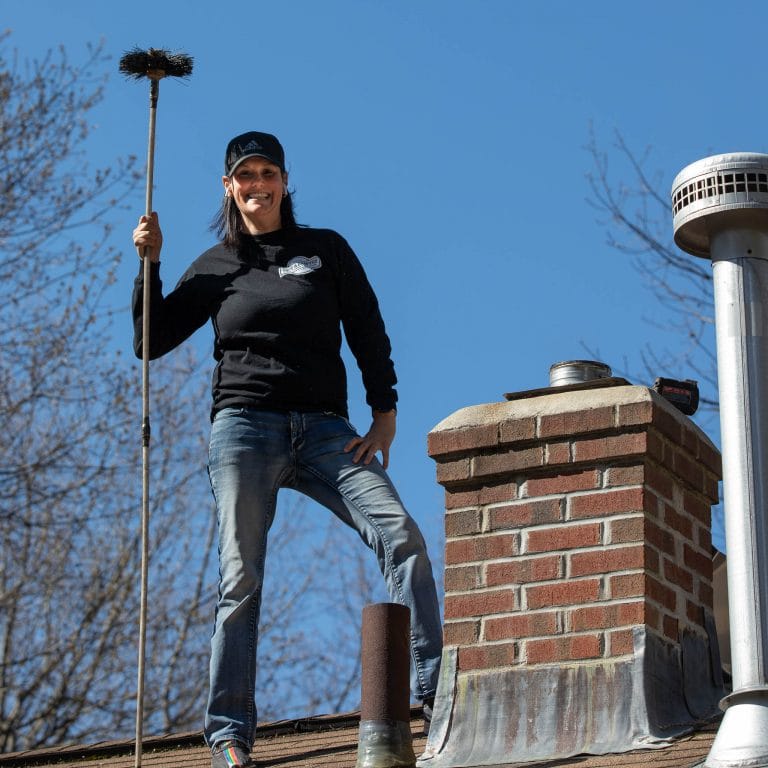The Ultimate Chimney Maintenance San Jose List for Assurance
The Ultimate Chimney Maintenance San Jose List for Assurance
Blog Article
Professional Tips for Effective Chimney Maintenance You Required to Know
Smokeshafts act as essential components in many homes, giving heat and comfort. Ensuring their proper maintenance is frequently forgotten till concerns develop. Understanding the ins and outs of chimney treatment can be the secret to avoid pricey repairs and safeguarding your home and household. From the significance of normal assessments to secure operational methods, an extensive method to chimney upkeep is essential. Let's discover expert tips that can assist you keep your chimney in ideal problem for years ahead.
Importance of Regular Evaluations
Normal assessments of smokeshafts are necessary for ensuring their security and capability. Smokeshafts play an important role in airing vent out harmful gases and keeping appropriate airflow in a home. Gradually, creosote buildup, particles, and structural damage can occur within the chimney, posing severe risks such as smokeshaft fires or carbon monoxide gas leakages.
Throughout a smokeshaft examination, educated experts evaluate the condition of the smokeshaft, looking for any kind of indicators of damage, blockages, or wear and tear. They also check the stability of the flue, chimney liner, and smokeshaft cap to make certain every little thing remains in appropriate working order. By determining and addressing problems at an early stage, expensive repair services or possible risks can be stayed clear of.
Routine inspections not only help in keeping the safety of the smokeshaft however additionally add to its total efficiency. A tidy and properly maintained smokeshaft runs more successfully, ensuring proper ventilation and minimizing the threat of indoor air contamination. Therefore, organizing annual chimney evaluations is a positive step that house owners can require to shield their property and liked ones.
Cleaning Strategies and Regularity
Maintaining the safety and effectiveness of a smokeshaft includes not only routine inspections but additionally carrying out appropriate cleaning techniques and figuring out the optimum regularity for cleaning. Smokeshafts need to be cleaned up by an expert chimney move at least when a year, even if they are not frequently used. Nonetheless, if the smokeshaft is used on a regular basis, especially with wood-burning cooktops or fire places, it might call for even more constant cleanings to avoid the build-up of creosote, an extremely flammable material that can bring about smokeshaft fires.
The cleansing process commonly includes removing creosote, soot, and debris from the chimney flue, smoke chamber, and firebox. Professional chimney sweeper use specialized vacuum cleaners, tools, and brushes to guarantee detailed cleansing without developing a mess in the home. Furthermore, they examine the chimney's structure for any indications of damage or put on that may call for repair services. House owners need to never ever neglect chimney cleansing, as it is essential for keeping a functional and secure smokeshaft system - Chimney Maintenance San Jose. Routine cleansings not only minimize the danger of smokeshaft fires however likewise improve the smokeshaft's overall efficiency and durability.
Addressing Smokeshaft Leaks

When addressing chimney leaks, extensive examination and timely fixings are crucial to stop water damage and keep the architectural stability of the smokeshaft. Leaks in a smokeshaft can lead to significant issues such as mold and mildew growth, wear and tear of the chimney structure, and even potential fire risks. To effectively resolve smokeshaft leakages, beginning by inspecting the smokeshaft cap, crown, blinking, and masonry for any type of indications of damage or wear.
Recognizing Creosote Build-Up
To recognize the prospective hazards of creosote build-up in smokeshafts, it is necessary why not find out more to acknowledge its formation procedure that site and effect on chimney performance. When wood or fossil gas are melted, Creosote is a brown or black tar-like material that accumulates inside chimney systems. As smoke climbs through the smokeshaft, it cools down and condenses, leading to the formation of creosote, which complies with the chimney walls.

Routine smokeshaft inspections and cleansings by a specialist chimney sweep are important in avoiding creosote build-up and ensuring the risk-free procedure of your smokeshaft system.
Safe Operation Practices
Applying proper security procedures is necessary for the secure and effective procedure of smokeshaft systems. Constantly ensure that the smokeshaft is properly checked and cleansed frequently to eliminate any kind of creosote buildup, which can lead to chimney fires.
Additionally, see to it to just burn seasoned wood in your fire place, as environment-friendly or damp timber can generate even more creosote and trigger harmful chimney obstructions. Never ever leave a fire ignored and constantly make sure the fire is totally extinguished before going to bed or leaving the residence. By following these secure operation practices, you can appreciate a warm and comfortable fire while making certain the safety and security of your home and enjoyed ones.
Conclusion
In conclusion, preserving your chimney is vital for ensuring its safety and security and effectiveness. Normal examinations, correct cleaning techniques, attending to leaks, handling creosote build-up, and his response adhering to risk-free procedure methods are crucial aspects of chimney upkeep.
Over time, creosote accumulation, particles, and structural damages can occur within the chimney, positioning major dangers such as chimney fires or carbon monoxide leakages.
If the chimney is made use of routinely, especially with wood-burning stoves or fire places, it may need even more frequent cleanings to protect against the build-up of creosote, an extremely combustible compound that can lead to chimney fires. (Chimney Maintenance San Jose)
To recognize the potential hazards of creosote build-up in chimneys, it is essential to identify its formation procedure and influence on chimney performance. As smoke climbs with the chimney, it cools down and condenses, leading to the formation of creosote, which sticks to the smokeshaft walls.
Always guarantee that the smokeshaft is expertly inspected and cleaned routinely to eliminate any kind of creosote build-up, which can lead to smokeshaft fires.
Report this page